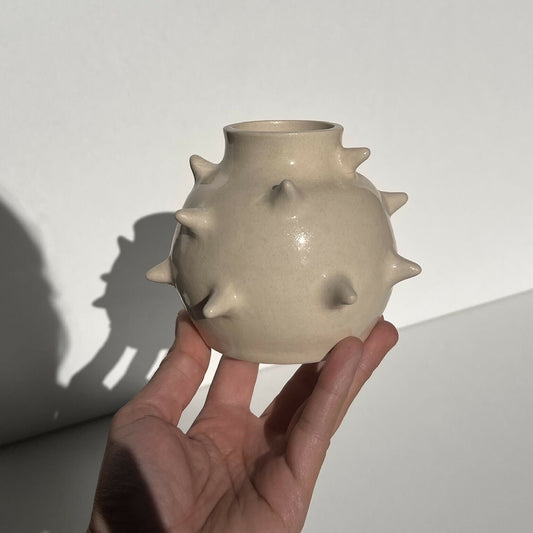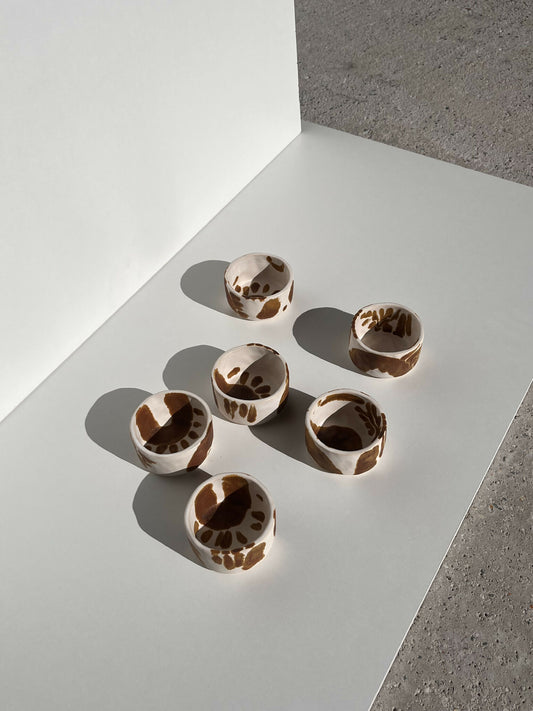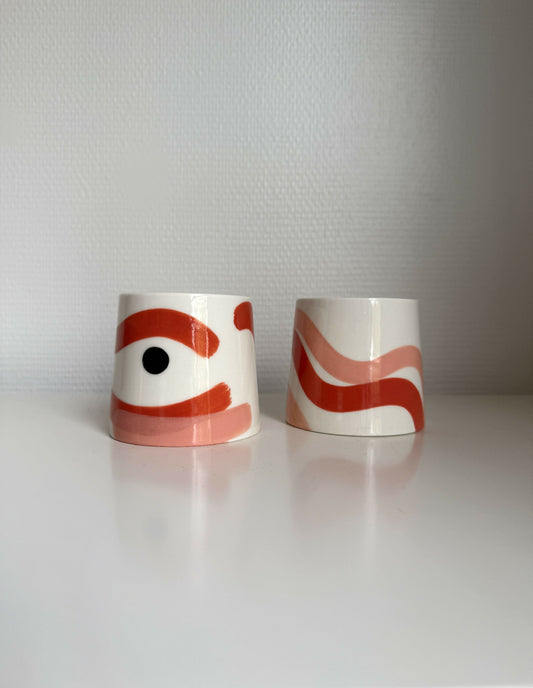The origin of Raku
Raku is a ceramic firing technique that has its origins in 16th century Japan. Initially developed for Waki-cha tea ceremony, its name can be literally translated as "joy" or "ease", and this philosophy is reflected in the artistic process and the final result of the raku pieces.
History and philosophy of Raku
The Raku technique was developed by the ceramist Chōjirō, under the influence of Sen no Rikyū, master of the tea ceremony. Raku pieces were then appreciated for their simplicity and rusticity, which corresponded to the wabi-sabi aesthetic, celebrating the beauty of imperfect and ephemeral things.
Over time, the Raku technique spread beyond Japan's borders, evolving and adapting to local tastes and techniques. In the twentieth century, it experienced a resurgence of popularity in the West, particularly in the United States, where it was adapted and experimented with by ceramic artists.
The Raku firing process
The traditional Japanese method and the Western method share basic principles but have some notable differences:
Preparing the clay:
The clay used for raku must withstand extreme temperature changes. It is often coarser and may contain materials which provide better resistance to thermal shock.
Japanese raku is traditionally made from Japanese clays, which have different properties from Western clays. Western raku can be made from any clay, but fireclays are generally used to achieve higher strength.
The first cooking:
The works are first biscuited, that is to say fired once before glazing. Japanese raku is fired at a high temperature, between 1200 and 1300°C, while Western raku is fired at a low temperature, between 900 and 1000°C.
The mesh :
After biscuit baking, the pieces are enameled. Special raku glazes melt quickly and have a distinct range of colors and effects.
The enamel used for Japanese raku is traditionally a transparent enamel, which allows the colors of the clay to appear. Western raku can be decorated with a variety of glazes, such as opaque, colored or metallic effect glazes.
Raku cooking:
The glazed pieces are then fired at a relatively low temperature for ceramics, usually around 950 degrees Celsius. They are quickly heated, and once the glaze melts and reaches the desired temperature, they are removed from the kiln.
Japanese raku is fired in a traditional Japanese kiln, called anagama. Western raku is fired in a gas or electric kiln.
The reduction :
In the Western method, this step is crucial. The pieces are taken out of the glowing oven and placed in metal containers filled with combustible materials such as wood chips, paper or leaves. When they ignite, the container is closed, causing a reduction reaction due to lack of oxygen. This affects glazes and clay, creating unique color and texture effects.
The recooling :
After a reduction time, the pieces are often immersed in water or left in the air to cool, which “fixes” the effects obtained.
The characteristics of Raku
Raku ceramics are renowned for their unique finishes. Cracked surfaces, metallic lusters, carbon reductions giving intense blacks and iridescent areas are all signatures of this technique.
Traditionally used for the artisanal manufacture of tea bowls, Raku is today used to create cups, vases, sculptures, jewelry...
Raku is much more than a cooking method; it is a philosophical approach that incorporates the elements of surprise and uniqueness. Each piece is the result of an interaction between fire, air, earth and water, offering a new and personal experience.
Today, artists continue to experiment with Raku, pushing the boundaries of this centuries-old tradition and creating contemporary works of art that engage with the past.













